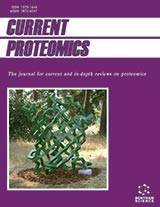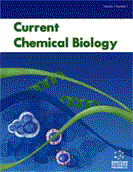Abstract
Chronic hepatitis C virus (HCV) infections are a significant health problem worldwide. The NS5B Polymerase of HCV plays a central role in virus replication and is a prime target for the discovery of new treatment options. The urgent need to develop novel anti-HCV agents has provided an impetus for understanding the structure-activity relationship of novel Hepatitis C virus (HCV) NS5B polymerase inhibitors. Towards this objective, multiple linear regression (MLR) and support vector machine (SVM) were used to develop quantitative structure-activity relationship (QSAR) models for a dataset of 34 Tetrahydrobenzothiophene derivatives. The statistical analysis showed that the models derived from both SVM (R2 = 0.9784, SE=0.2982, R2 cv = 0.92) and MLR (R2=0.9684, SE=0.1171, R2 cv= 0.955) have a good internal predictivity. The models were also validated using external test set validation and Y-scrambling, the results demonstrated that MLR has a significant predictive ability for the external dataset as compared to SVM. Also the model is found to yield reliable clues for further optimization of Tetrahydrobenzothiophene derivatives in the data set.
Keywords: Hepatitis C virus, NS5B polymerase inhibitors, QSAR, support vector machine, tetrahydrobenzothiophene.
Current Bioinformatics
Title:Credential Role of van der Waal Volumes and Atomic Masses in Modeling Hepatitis C Virus NS5B Polymerase Inhibition by Tetrahydrobenzo- Thiophenes Using SVM and MLR Aided QSAR Studies
Volume: 8 Issue: 4
Author(s): Kirti Khuntwal, Mukesh Yadav, Anuraj Nayarisseri, Shobha Joshi, Deepika Sharma and Smita Suhane
Affiliation:
Keywords: Hepatitis C virus, NS5B polymerase inhibitors, QSAR, support vector machine, tetrahydrobenzothiophene.
Abstract: Chronic hepatitis C virus (HCV) infections are a significant health problem worldwide. The NS5B Polymerase of HCV plays a central role in virus replication and is a prime target for the discovery of new treatment options. The urgent need to develop novel anti-HCV agents has provided an impetus for understanding the structure-activity relationship of novel Hepatitis C virus (HCV) NS5B polymerase inhibitors. Towards this objective, multiple linear regression (MLR) and support vector machine (SVM) were used to develop quantitative structure-activity relationship (QSAR) models for a dataset of 34 Tetrahydrobenzothiophene derivatives. The statistical analysis showed that the models derived from both SVM (R2 = 0.9784, SE=0.2982, R2 cv = 0.92) and MLR (R2=0.9684, SE=0.1171, R2 cv= 0.955) have a good internal predictivity. The models were also validated using external test set validation and Y-scrambling, the results demonstrated that MLR has a significant predictive ability for the external dataset as compared to SVM. Also the model is found to yield reliable clues for further optimization of Tetrahydrobenzothiophene derivatives in the data set.
Export Options
About this article
Cite this article as:
Khuntwal Kirti, Yadav Mukesh, Nayarisseri Anuraj, Joshi Shobha, Sharma Deepika and Suhane Smita, Credential Role of van der Waal Volumes and Atomic Masses in Modeling Hepatitis C Virus NS5B Polymerase Inhibition by Tetrahydrobenzo- Thiophenes Using SVM and MLR Aided QSAR Studies, Current Bioinformatics 2013; 8 (4) . https://dx.doi.org/10.2174/1574893611308040008
| DOI https://dx.doi.org/10.2174/1574893611308040008 |
Print ISSN 1574-8936 |
| Publisher Name Bentham Science Publisher |
Online ISSN 2212-392X |
 14
14
- Author Guidelines
- Bentham Author Support Services (BASS)
- Graphical Abstracts
- Fabricating and Stating False Information
- Research Misconduct
- Post Publication Discussions and Corrections
- Publishing Ethics and Rectitude
- Increase Visibility of Your Article
- Archiving Policies
- Peer Review Workflow
- Order Your Article Before Print
- Promote Your Article
- Manuscript Transfer Facility
- Editorial Policies
- Allegations from Whistleblowers
Related Articles
-
Immune Therapy in Pancreatic Cancer: Now and the Future?
Reviews on Recent Clinical Trials Chemical and physical factors influencing the dynamics of differentiation in embryonic stem cells
Current Stem Cell Research & Therapy Colloidal Microgels in Drug Delivery Applications
Current Pharmaceutical Design Insulin Resistance and Postprandial Hyperglycemia the Bad Companions in Natural History of Diabetes: Effects on Health of Vascular Tree
Current Diabetes Reviews The Molecular Basis of COX-2 Versus COX-1 Selectivity of Lumiracoxib by Molecular Docking Studies
Letters in Drug Design & Discovery Cytoprotection by Inhaled Carbon Monoxide before Cardiopulmonary Bypass in Preclinical Models
Current Pharmaceutical Biotechnology γ-Secretase-Regulated Signaling Pathways, such as Notch Signaling, Mediate the Differentiation of Hematopoietic Stem Cells, Development of the Immune System, and Peripheral Immune Responses
Current Stem Cell Research & Therapy Diet and Cardiovascular Disease: Effects of Foods and Nutrients in Classical and Emerging Cardiovascular Risk Factors
Current Medicinal Chemistry Structural Approaches to Explain the Selectivity of COX-2 Inhibitors: Is There a Common Pharmacophore?
Current Medicinal Chemistry Indole Curcumin Reverses Multidrug Resistance by Reducing the Expression of ABCB1 and COX2 in Induced Multidrug Resistant Human Lung Cancer Cells
Letters in Drug Design & Discovery Synthetic and Natural Nutritional Supplements: Health "Allies" or Risks to Public Health?
Recent Patents on Inflammation & Allergy Drug Discovery Safety and Efficacy of Duloxetine in the Treatment of Diabetic Peripheral Neuropathic Pain in Older Patients
Current Drug Safety Development of Peptide Vaccines in Dengue
Current Pharmaceutical Design QSAR and Docking Studies on Propenone Derivatives as Dual COX and 5- LOX Inhibitors
Letters in Organic Chemistry Vehicles for Lipophilic Drugs: Implications for Experimental Design, Neuroprotection, and Drug Discovery
Current Neurovascular Research Glucocorticoids: Structure, Signaling and Molecular Mechanisms in the Treatment of Diabetic Retinopathy and Diabetic Macular Edema
Current Molecular Medicine Editorial (Thematic Issue: Mood Disorders and General Medical Comorbidities: Shared Biology and Novel Therapeutic Targets)
Current Molecular Medicine Towards Drug Discovery for Brain Tumours: Interaction of Kinins and Tumours at the Blood Brain Barrier Interface
Recent Patents on CNS Drug Discovery (Discontinued) Latest Development in Drug Discovery on G Protein-coupled Receptors
Current Protein & Peptide Science Evaluation of HIV-1 Regulatory and Structural Proteins as Antigen Candidate in Mice and Humans
Current HIV Research

















.jpeg)








